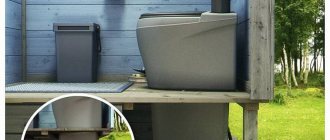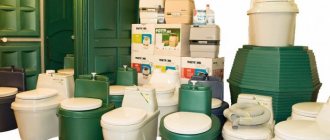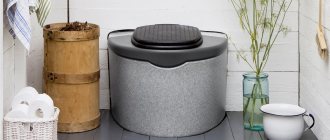With the arrival of spring, the summer season traditionally opens. Work in the garden requires a lot of physical effort and time, so experienced summer residents use auxiliary equipment to make work easier. A cultivator is especially helpful in agricultural work. The device is designed for efficient and fast soil cultivation, and in large areas it becomes an indispensable assistant. In this article we will look at the main characteristics of this unit and give recommendations on how to choose the right cultivator for your garden.
Types of unit
Any cultivator, of course, is smaller in size than a walk-behind tractor; it is lighter, more economical and more maneuverable than the second representative. And among them there are models with the ability to use additional attachments, which allows you to expand the range of work performed.
The main difference between this garden device is its ability to move due to the rhythmic rotation of the cutter, although some models are equipped with wheels solely for ease of transportation.
Before answering the question of which cultivator is better for a garden, it would be useful to review the existing versions.
There are the following main types of all cultivators:
- units with a gasoline engine (designed to serve large areas, much more powerful than their counterparts, they can also cope with virgin lands);
- electric models, easier to maintain, cheaper, but limited in distance due to connection to the voltage network;
- battery-powered devices designed to handle small areas;
- the simplest manual cultivator for a summer residence, suitable for cultivating soil in small areas.
It turns out that the choice of one option or another will, first of all, be influenced by the size and type of plot. It is also worth taking into account the physical capabilities of the worker, since only a strong man can handle a heavy mechanism.
Inexpensive models (up to RUB 5,000)
CHAMPION EC750
pros
- Low cost
- Maneuverability
- Mobility
- Easy to operate
- Compact
- Eco-friendly
Minuses
- Easy
- The handle bursts
From 4590 ₽
A small, cheap cultivator that will serve those who do not need to plow a large area for a vegetable garden. Will be able to master soft soil for planting flowers and small shrubs. Compact and mobile, you can take it with you anywhere. The electric motor does not emit harmful substances into the air. But you shouldn’t use it for too long, otherwise it may overheat or even stall.
Carver T-300
pros
- Comfortable handle
- Maneuverable
- Compact
- Lasting
- Hardy
Minuses
- Buries itself
- Easy
- A little expensive
From 9050 ₽
Not a bad, nice model from Carver, which is perfect for cultivating land for a garden. For the price you can get a durable and hardy assistant, but it is still a little expensive compared to analogues in this segment. It often gets buried due to too large wheels at the back, but it is convenient to transport the entire structure on them.
DDE ET750-30
pros
- Eco-friendly
- Maneuverable
- Hardy
- overheat protection
- Low price
- Easy to assemble and maintain
Minuses
- Too light
- Questionable pen quality
From 4490 ₽
A good model that is worth the money, but still not heavy enough to be used for serious work. Thanks to the design and handle, it is convenient to use, but the handle is of questionable quality, so you may need another one. The motor itself is durable and does not overheat, and is capable of producing good results on developed soil.
Division by class
Cultivators are conventionally divided into three classes:
- Heavy versions (more than 60 kg), capable of cultivating up to 30-50 acres of any land.
- Medium-heavy equipment (from 30 kg), which can also cope with untreated areas of 10 to 30 acres; are considered the best cultivators for the garden and are in greatest demand.
- Lightweight options can easily cope with an area of 3-5 acres, are convenient for loosening beds, lawns, flower beds, as well as greenhouses, even for women or elderly people, and are as compact as possible.
Each model has its own advantages and range of operating conditions.
Engine types
Motor cultivators, the most reliable and popular, differ in the operating principle of the engine.
Manufacturers offer equipment with engines of 4 modifications, they are presented in the table.
| Engine type | Peculiarities | Advantages | Flaws |
| Gasoline | The equipment is equipped with 2 or 4-stroke internal combustion engines. 2-stroke engines are suitable for light vehicles; 4-stroke engines are used for medium and heavy vehicles. It is required to refuel with fuel with an octane rating of at least 92. 2-stroke engines are filled with a mixture of engine oil and gasoline in a ratio of 1:4. | Autonomous, powerful engine allows you to process virgin soil, there is no slipping. | Noisy operation, presence of exhaust gases and vibration. Regular technical monitoring is required. |
| Diesel | They belong to the class of heavy equipment, weigh from 100 kg or more, and are capable of processing up to 5 hectares. Equipped with a 4-stroke engine. | Wide range of possibilities for using equipment and inexpensive fuel. | Noisy, heavy, there are exhaust gases. Regular technical monitoring is required. |
| Electrical | They operate from the network, the equipment can be transferred to the length of the wire, usually 20-50 m. The phase phase of the network should be 220 or 380 V, the type of fastening of the cord and its length matter. | They are distinguished by their light weight and compactness, quiet operation, and the absence of harmful emissions into the atmosphere. | Not suitable for primary cultivation or plowing of large areas. Dependence on power source. Requires careful use (you can break the cord). |
| Rechargeable | The lithium-ion battery placed in the housing ensures autonomy of the device for 45 minutes. | Maneuverability, compactness, silent operation. | Cannot be used for processing large areas, dependence on battery life. |
The choice of a motor cultivator is determined by what type of fuel is intended to be used, whether the unit requires autonomous operation or whether it can be connected to the electrical network.
Which option is more profitable and convenient?
If we compare electric and gasoline, the consumer probably understands that the range of the first will be limited by the length of the connected cable. And it’s much lighter in weight and easier to operate (to start, you just need to connect to the network).
As for a gasoline cultivator for a summer residence, you will have to regularly change the oil and periodically change air filters and spark plugs.
It is also noisier; during operation, combustion products will certainly be released into the surrounding atmosphere.
The positive point here is that there is a wider choice of models; gasoline is cheaper (although in small areas the difference in price is not so significant).
Walk-behind tractor
The walk-behind tractor is very similar to a motor-cultivator. They are usually much more powerful than cultivators. The walk-behind tractor can:
- Have a power take-off shaft (PTO).
- Don't have it.
If the walk-behind tractor has a PTO, then additional equipment can be hung on it and used as:
- Snow blower.
- Lawnmower.
- When attaching a mounted brush, sweep.
Exploring Additional Features
If the goal is a comprehensive and careful selection, you will have to pay attention to the following factors:
- power indicators (can be from 600 to 2500 W);
- total processing width; it is clear that the greater the width, the more powerful the unit (but what about hard-to-reach places in such cases?);
- indicators of loosening depth (for budget models on average 30 cm, depending on the properties of the soil);
- the number of cutters and the speed of its rotation (more expensive versions make it possible to change the rotation speed from 120 to 300 revolutions, adding additional quantities of working elements);
- equipped with attachments or the possibility of using them;
- set of speed modes (forward and backward);
- type of gearbox (chain, worm or gear).
Worm gearboxes are characterized by compactness and noiselessness, but they cannot withstand heavy loads and virgin soils.
A chain gearbox has greater power capabilities and is more expensive. In addition, it does not limit the depth of loosening at all, because capable of going deep into the ground together with a cutter.
Having also studied the photos of garden cultivators and their main characteristics, you can understand that units with gear reducers are the most durable and reliable.
Attention! An additional hint when choosing may be the ability to adjust the height of the handle (not everyone has it). Sometimes it can become a necessary condition for comfortable work.
Principle of operation
The motor cultivator is a motor mounted on a durable metal frame. Through a gearbox, the engine transmits torque to a shaft equipped with attachments - cutters. Rotating, the cutters plow the soil.
Today, motorized cultivators are practically necessary equipment for growing vegetable and garden crops.
The equipment moves thanks to wheels or resting on cutters. Self-propelled equipment can be equipped with attachments such as a harrow, plow, hiller, and seeder. Switching on and controlling the speed of movement is carried out by levers that are placed on the handles.
When choosing a motor cultivator, you need to determine the tasks it should perform:
- what depth of tillage is planned;
- working width parameters;
- ease of movement;
- number of operations and volume of work.
The size of the cultivated area is also taken into account.
The most popular brands
It is important to read customer reviews and expert advice before purchasing. Among the electric models, the easy-to-drive Hyundai T 1810E, the German line of Hummers, Caliber, Italian mini cultivators for gardens (which cope exclusively with small beds), etc. are in high demand.
Of the heavy-duty gasoline engines, Neva is most often purchased; in the middle range, Krot, Tarpan, CHAMPION, Zubr, Mobile, etc. When choosing, viewing the latest ratings in the desired category will help.
Only by familiarizing yourself with the declared characteristics and capabilities of specific developments can you get a reliable and durable assistant and make your work several times easier.
Advantages of a walk-behind tractor
You can additionally install wheels and a trailer on the walk-behind tractor. It’s so easy to transport the necessary cargo using a walk-behind tractor instead of a tractor.
But you will have to pay more money for it, because it costs much more than a motorized cultivator. And attachments can cost more than the walk-behind tractor itself.
Photos of the best cultivators for the garden
Lightweight motor cultivator
This type is a budget option and is perfect for working in the country. The weight of such cultivators does not exceed 30 kilograms. Their disadvantage is that they cannot be used over a large area.
The recommended area is 15 acres. And the depth of tillage of such cultivators does not exceed 20 cm.
Motor cultivator with internal combustion engine
The most popular are those cultivators that run on gasoline. They are practically unlimited in their power.
This unit has only one drawback - the high price. They are much more difficult to maintain. Gasoline motorized cultivators can be equipped with a two-stroke or four-stroke engine.
Choosing a motor cultivator
To understand which cultivator is best suited for the work at hand, you should first set the correct goals and tasks that the unit will perform.
Calculate the budget and desired technical characteristics. Then you can choose the right device without any extra effort.
Purpose of the gearbox
Torque is transmitted from the internal combustion engine to the wheels using a gearbox. The service life of this unit will depend on how reliable this unit is.
On motor cultivators they can use:
- Chain reducer. Considered the most popular option. It has the greatest resource, and costs a penny.
- Worm gear. This type is very compact and is installed on light-type cultivators.
- Gear reducer. The most reliable and will last for many years. Only powerful motor cultivators are equipped with such gearboxes. The main disadvantage is the high cost.
- Gear-chain reducer. Something between a chain and gear reducer. It adds power to the cultivator and costs less.
Medium cultivator
This type is suitable for gardeners. The weight of such cultivators ranges from 40 to 65 kilograms, and the power does not exceed 6 horsepower. The working depth of this cultivator does not exceed 35 cm.
This type of cultivator is usually equipped with three speeds, one of which is rear. This equipment is very easy to use.
What you need to know about the transmission
To select the right cultivator, you need to pay attention to the type of transmission installed. The reliability of a manual cultivator will depend on its variety.











